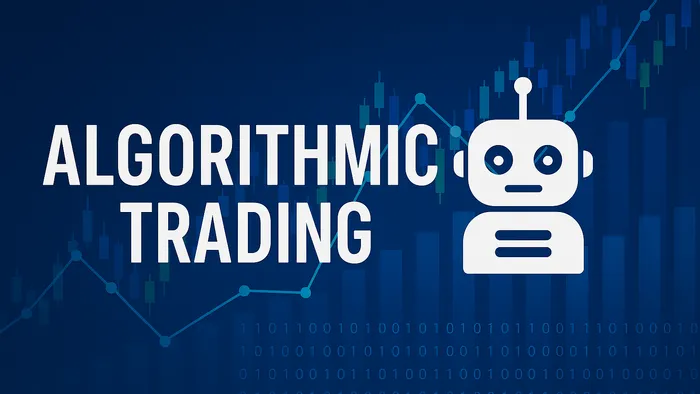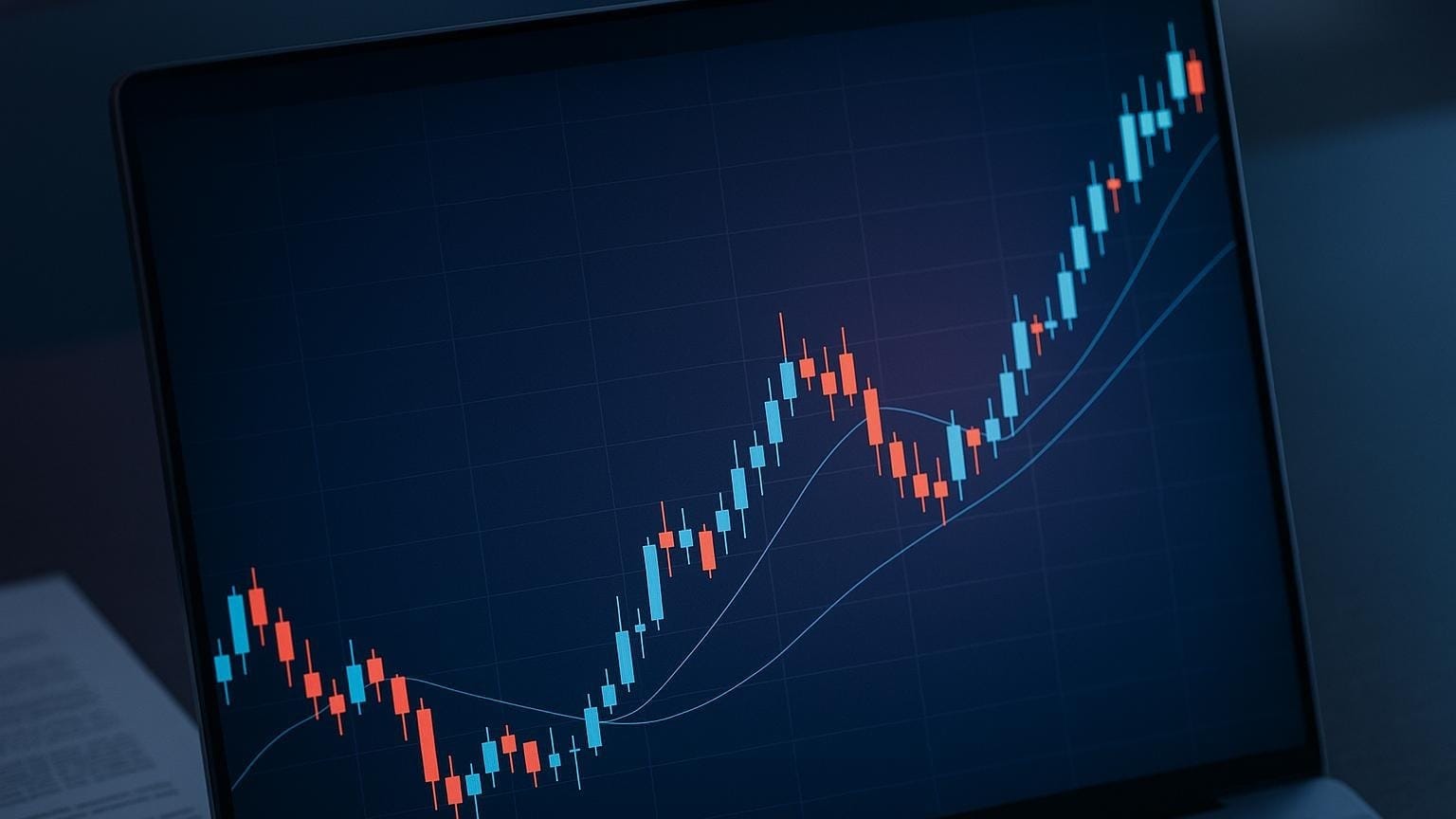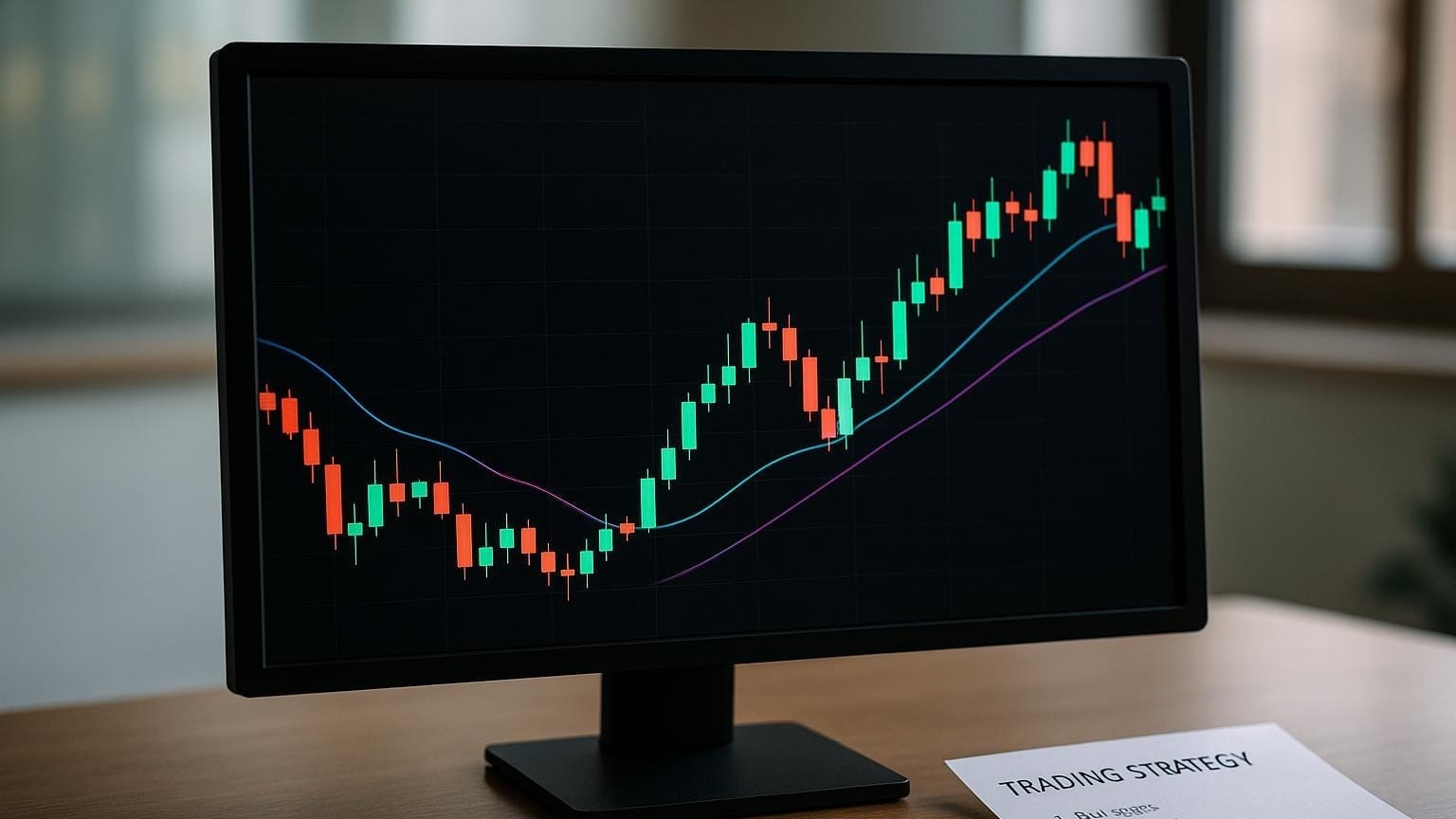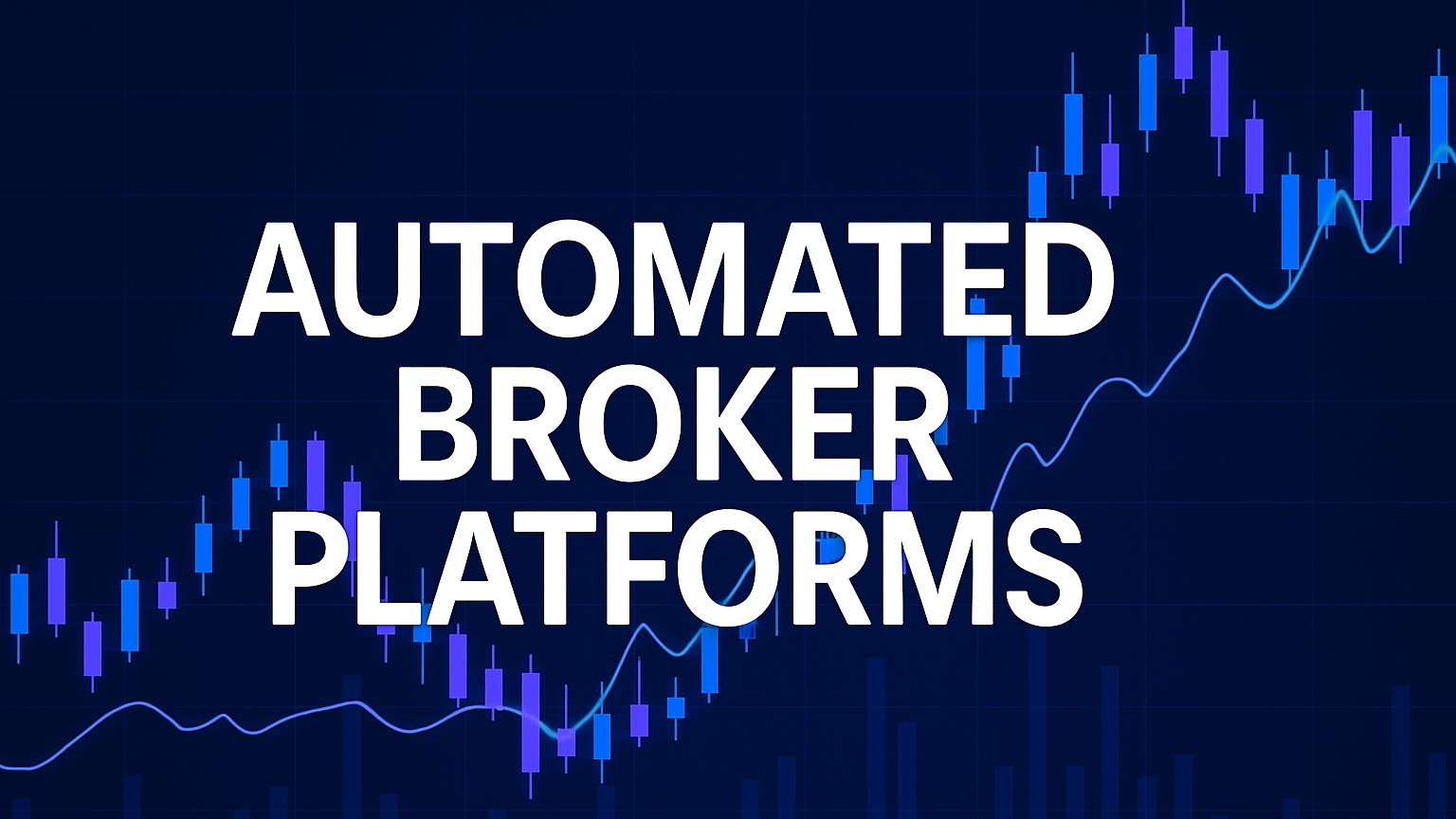Explore how algorithmic trading revolutionized equity markets, enhancing efficiency and accessibility while presenting new challenges.
Algorithmic trading has reshaped financial markets, automating trade execution and making markets faster, more efficient, and accessible. Today, 60-73% of U.S. equity trades and 92% of Forex trades are algorithm-driven. Key benefits include:
- Speed: Trades executed in microseconds.
- Lower Costs: Reduced transaction fees and bid-ask spreads.
- Improved Liquidity: Higher trading volumes.
- Data-Driven Decisions: AI and machine learning identify patterns and trends.
However, risks like technical failures (e.g., Knight Capital’s $440 M loss in 45 minutes) and flash crashes highlight the need for robust safeguards and regulatory oversight.
Quick Overview
- Top Performer: Renaissance Technologies’ Medallion Fund achieved 66% annual returns (pre-fees) over decades.
- Tools: LuxAlgo offers advanced indicators and an AI Backtesting Assistant to help traders refine strategies.
- Future Trends: AI, quantum computing, and stricter regulations will shape the next phase of algo trading.
Algo trading combines cutting-edge tech with human judgment, offering opportunities and challenges for traders and markets alike.
5 Rules That Transformed $400 into $200 Million: The Richard Dennis Story
How Algorithmic Trading Grew
Algorithmic trading has transformed financial markets over the years. Here's a look at its journey, from early rule-based approaches to today's cutting-edge platforms.
Major Changes in Trading History
Key moments in trading evolution include:
| Year | Milestone | Impact |
|---|---|---|
| 1949 | Richard Donchian introduces a rule-based strategy with Futures, Inc. | Set the stage for systematic trading methods. |
| 1960 | Ed Thorp and Michael Goodkin, alongside Harry Markowitz, develop a computer-based arbitrage system. | Marked one of the first uses of computers in trading. |
| 1971 | Creation of Nasdaq | Launched a fully automated over-the-counter trading platform. |
| 1987 | Thomas Peterffy uses IBM computers to innovate trading | Built the first fully automated algorithmic trading system. |
| 1998 | SEC approves electronic exchanges | Opened the door for high-frequency trading. |
| 2001 | U.S. Decimalization | Reduced the minimum tick size, increasing market efficiency. |
(Source:)
Between 2005 and 2009, the volume of algorithmic trading grew by 164%. By 2013, algorithms were responsible for roughly 70% of equity trades in the U.S.
From Human to Computer Trading
The transition from human floor traders to computer-driven systems has completely reshaped how markets operate. Back in 2001, high-frequency trades took several seconds to complete. By 2010, execution times dropped to milliseconds, and by 2012, trades were happening in nanoseconds.
"It is over. The trading that existed down the centuries has died. We have an electronic market today. It is the present. It is the future."
– Robert Greifeld, then NASDAQ CEO, April 2011
This shift brought several advantages:
- Improved liquidity: Liquidity co-movement within five minutes increased by 30-50%.
- Lower costs: Automation reduced bid-ask spreads and transaction fees.
- Faster trade execution: Modern systems process vast data sets and execute trades in microseconds.
- Greater accessibility: Electronic trading has opened the market to a wider range of participants, making investing more inclusive.
Success Story: Renaissance Technologies

Renaissance Technologies has made its mark by leveraging cutting-edge technology to reshape equity markets.
About Renaissance Technologies
Renaissance Technologies (RenTech), founded by mathematician James Simons, is a prominent hedge fund managing an impressive $130 billion in assets as of April 2021.
RenTech's hiring strategy focuses on scientists from fields like physics, statistics, and computer science, rather than traditional Wall Street professionals. The New York Times highlights this approach: "Wall Street experience is frowned on and a flair for science is prized". This strategy has driven the fund's extraordinary performance.
Medallion Fund Performance
RenTech's Medallion Fund has consistently delivered standout results:
| Period | Medallion Fund Return | Market Context |
|---|---|---|
| 1988-2018 | 66% (before fees), 39% (after fees) | Outperformed market indices |
| 2008 | 82% (after fees) | S&P 500 dropped 37% |
| 1994-2014 | 71.8% average annual return | Maintained long-term success |
| 1993-2005 | Only 17 losing months | Showed exceptional stability |
"Since 1988, his flagship Medallion fund has generated average annual returns of 66% before charging hefty investor fees, 39% after fees, racking up trading gains of more than $100 billion. No one in the investment world comes close. Warren Buffett, George Soros, Peter Lynch, Steve Cohen, and Ray Dalio all fall short." – Gregory Zuckerman
These numbers highlight the power of RenTech's approach and the impact of its advanced trading strategies.
Trading Methods Used
RenTech's success is rooted in its quantitative trading techniques and extensive data analysis. Here's how they do it:
- Statistical Pattern Recognition Algorithms: Detect subtle market trends.
- High-Frequency Trading: Executes a large number of trades, with a win rate of about 50.75%.
- Risk Management: Market-neutral approach maintains a negative correlation (-0.41) with broader market movements.
"The markets are very efficient and very hard to beat, and so the only way you're going to beat them is by using computers and technology." – James Simons
RenTech's methods have set a new standard for algorithmic trading, which now accounts for 60-73% of all U.S. equity trades.
Market Changes from Algo Trading
Algorithmic trading has had a noticeable impact on market structures, building on advancements in technology and reshaping how markets operate.
Improved Market Flow and Speed
Algorithmic trading has made markets faster and more accessible. These algorithms can execute trades in microseconds, handling volumes that would be impossible for humans to manage. This has led to several benefits:
- Lower transaction costs due to narrower bid-ask spreads.
- Increased liquidity from higher trading volumes.
- Faster price discovery, allowing prices to reflect market conditions almost instantly.
- Broader access for both institutional and retail participants.
"Algorithmic trading fosters market efficiency by narrowing bid-ask spreads, reducing transaction costs, and ensuring fairer pricing. This efficiency benefits both traders and investors, contributing to a more transparent and competitive financial ecosystem."
By leveling the playing field, algorithmic trading has intensified competition and improved overall market performance. But these advantages come with challenges that shouldn't be overlooked.
Key Risks and Challenges
While algorithmic trading offers many advantages, it also introduces risks like technical failures, poor data quality, increased volatility, and the rapid spread of shocks across interconnected markets.
| Incident | Date | Impact | Cause |
|---|---|---|---|
| Knight Capital Failure | Aug 2012 | $440 million loss in 45 minutes | Faulty trading algorithm |
| Flash Crash | May 2010 | 1,000-point Dow Jones drop; over 20,000 trades mispriced | Market manipulation through "spoofing" |
"Algorithms operating across markets can transmit shocks rapidly from one market to the next, thus amplifying systemic risk." – International Organization of Securities Commissions (IOSCO) Technical Committee
These incidents highlight the need for strong safeguards and oversight to manage the risks associated with algorithmic trading.
Regulatory Measures and Oversight
To address these risks, regulatory bodies like the SEC and FINRA have implemented strict rules to ensure market stability. These include:
- Pre-trade risk controls, such as limits on order sizes.
- Automated safeguards and recovery protocols to handle technical issues.
- Post-trade surveillance to detect and prevent manipulation.
- System stress testing to evaluate resilience under extreme conditions.
"Electronic trading and algorithmic trading are both widespread and integral to the operation of our capital markets." – U.S. Securities and Exchange Commission (SEC)
Additionally, FINRA Rule 3110 requires firms to establish strong supervisory practices, including regular software testing and clear compliance protocols. These measures aim to balance the benefits of algorithmic trading with the need to maintain a stable and fair market environment.
Current Trading Tools and Tech
Algorithmic trading today relies on advanced tools and platforms designed to help traders create, test, and execute strategies effectively. Let’s dive into LuxAlgo's offerings, how AI is shaping trading systems, and the role of platform integrations.
LuxAlgo Trading Tools
LuxAlgo provides powerful technical indicators and exclusive tools on TradingView, serving millions of users. Here's an overview of what they offer:
| Toolkit | Purpose | Key Features |
|---|---|---|
| Price Action Concepts | Detects patterns | Auto-pattern recognition, volumetric order blocks |
| Signals & Overlays | Analyzes markets | Multiple signal algorithms, customizable overlays |
| Oscillator Matrix | Tracks trends | Real-time divergence detection, money flow insights |
One standout feature is the AI Backtesting Assistant, included in the Ultimate plan ($59.99 mo). Traders on the Premium plan ($39.99 mo) gain access to advanced signals and overlays, while the Ultimate plan adds the AI Backtesting platform for automatically creating and testing strategies across multiple markets.
"Hands down BEST indicators you can find... The cool thing is, they make videos and walkthroughs of literally every indicator and setting and what it does." – Eric Bland
AI in Trading Systems
Artificial intelligence takes trading to the next level by improving strategy precision. LuxAlgo's AI Agent offers traders the ability to:
- Create custom strategies using machine learning
- Test and improve strategies with automated backtesting
- Spot high-probability setups across different markets
- Adjust to changing market conditions in real time
"LuxAlgo exactly allows me to see the market faster and confirm entries / exits and it's amazing! The technical support and especially the Discord channel are amazing." – Çağrı Güler
Platform Connections
To ensure smooth operations, LuxAlgo integrates seamlessly with modern trading platforms. Their tools are primarily accessible through TradingView, offering:
- AI-enhanced charting and market analysis in real time
- Custom alerts for automated trade signals
- Compatibility with major trading platforms
LuxAlgo also fosters an active community on Discord, where traders exchange ideas and get support, an invaluable resource for refining strategies.
"LuxAlgo has really stepped my trading up, there is a setup for any style of trading you prefer which is very nice, you don't have to put yourself in a box metaphorically speaking." – Kevin Ortega
Summary and Next Steps
Main Effects on Markets
Algorithmic trading has reshaped equity markets in profound ways. By 2009, over 60% of all U.S. trades were handled by computers. Here's a breakdown of its key impacts:
| Area | Impact | Advantage |
|---|---|---|
| Market Efficiency | Microsecond execution | Quicker price adjustments |
| Trading Volume | High-frequency trading | Improved liquidity |
| Risk Management | Automated controls | Fewer human errors |
| Cost Reduction | Systematic execution | Lower transaction costs |
These changes provide traders with tools to refine their strategies and operate more effectively.
Tips for Traders
- Build a Strong Foundation
Learn Python programming and deepen your understanding of market dynamics before diving into advanced algorithms. - Pick the Right Tools
LuxAlgo's Premium plan ($39.99 mo) includes advanced indicators, while the Ultimate plan ($59.99 mo) adds the AI Backtesting Assistant for automatically creating and testing strategies.
What Comes Next
Algorithmic trading is constantly advancing. To stay ahead, traders need to adjust their strategies in response to these emerging trends:
- AI Integration: Machine learning is being tailored to niche markets.
- Quantum Computing: This could redefine the speed and power of trading algorithms.
- Regulatory Changes: Stricter rules are likely as regulators aim to improve transparency in algorithmic trading.
The key to success lies in blending cutting-edge technology with sound human judgment. Using AI as a tool to enhance, not replace, decision-making can lead to smarter and more disciplined trading strategies.








